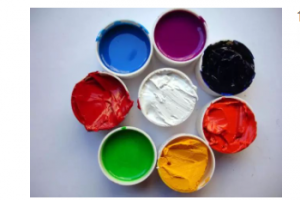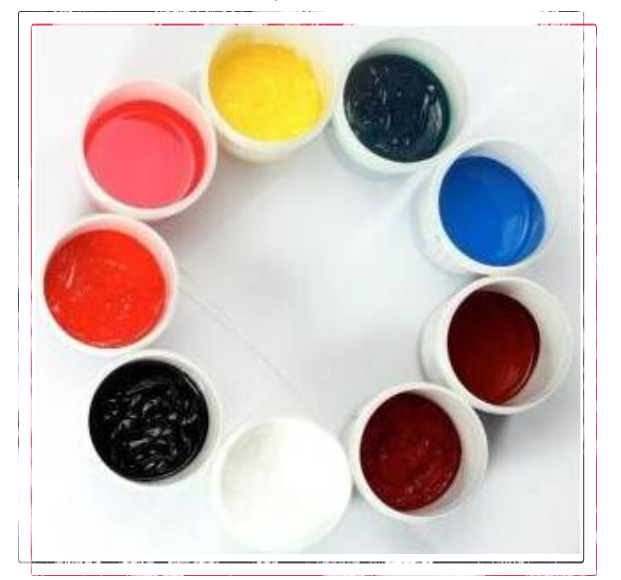7 kinds of common pigment dispersants for coatings and their functions
Dispersant is also called wetting and dispersing agent, it has wetting effect, one end of its active group can be adsorbed on the surface of pigment crushed into fine particles, and the other end can be solventized into the paint base to form adsorption layer (the more adsorption groups, the longer the chain link, the thicker the adsorption layer), resulting in charge repulsion (water-based paint) or entropy repulsion (solvent-based paint), so that the pigment particles can be dispersed and suspended in the paint base for a long time to avoid flocculation again, thus ensuring This ensures the storage stability of the paint system.

There are many kinds of dispersants, and the preliminary estimate is that there are more than 1000 kinds of substances with dispersing effect in the world. Now, according to their structure, they can be divided into the following 7 types.
Anionic wetting and dispersing agents
Most of them are composed of non-polar negatively charged hydrocarbon chains and polar hydrophilic groups, which are at both ends of the molecule and form an asymmetric hydrophilic and oleophilic molecular structure. It has the following varieties: sodium oleate C17H33COONa, carboxylate, sulfate (R-O-SO3Na), sulfonate (R-SO3Na), etc. Anionic dispersants are compatible, such as Sago-9700 wetting and dispersing agent of Sago Special Chemical is widely used in water-based coatings and inks. Polycarboxylic acid polymers etc. can also be used in solvent-based coatings and are widely used as controlled flocculation type dispersants.
Cationic type wetting and dispersing agents

They are positively charged compounds with non-polar groups, mainly amine salts, quaternary amine salts, pyridinium salts, etc. Cationic surfactants have strong adsorption power and have better dispersion effect on carbon black, various iron oxides and organic pigments. However, attention should be paid to its chemical reaction with the carboxyl group in the base material, and attention should also be paid not to use it at the same time with anionic dispersants.
Controlled free radical type hyperdispersant
The latest controlled free radical polymerization technology (CFPP) can make the structure of dispersant more regular. Commonly used methods include GTP, ATRP (atomic transfer radical polymerization), RAFT (reversible addition breakage chain transfer controlled radical polymerization, including C-RAFT and S-RAFT, etc.), NMP, SFRP (stable radical polymerization), TEMPO, etc. By using controlled radical polymerization technology, the relative molecular mass distribution of dispersant can be more concentrated and the anchoring groups can be more concentrated and more efficient. For example, Sago-9311 and EFKA-4310 wetting and dispersing agents are widely compatible, especially for color organic pigments, and are widely used in nano general color paste industry.
Non-ionic wetting and dispersing agent
They are not ionized in water and have no charge, so they are weakly adsorbed on the surface of pigments and are mainly used in water-based coatings. They are mainly divided into glycol and polyol types to reduce surface tension and improve wettability. Used with anionic dispersants as wetting agent or emulsifier, widely used in aqueous color paste, aqueous coatings and inks.
Amphoteric type wetting and dispersing agent
It is a compound composed of anion and cation. Typical applications are phosphate ester salt type polymers. These polymers have high acid values, which may affect interlayer adhesion.
Electrically neutral wetting and dispersing agents
The size of the anionic and cationic organic groups in the molecule is basically equal, and the whole molecule appears neutral, but is polar.

Polymer type hyperdispersants
Polymeric non-ionic dispersants are most commonly used and have the best stability. Polymeric dispersants are also divided into poly(caprolactone) polyol-poly(vinylimine) block copolymer dispersants, acrylate polymeric dispersants, polyurethane, polymeric polyether or polyester polymeric dispersants, etc. Since their anchoring groups are attached to the pigment particles at one end and entangled with the resin at the other end, the storage stability is better. In addition, polymer dispersants are not only the above types of structures, they can also graft and cooperate with each other to achieve the best performance. For example, Sago-9760 wetting and dispersing agent is widely used in water-based, alcoholic water and other high-polarity systems of industrial coatings, nano general color paste, ink, pigment inkjet, resin-free color paste system, good color spreading, excellent anti-sink performance, prevent floating color, stable performance!
The role of dispersant
1、Improve gloss, increase leveling effect There are tests show that the exact same formula, using different dispersants, the resulting paint film gloss will have a significant difference. For example, in the black coil coating system, different 3 dispersants produced by the coating film of 20 ° gloss were 69.7%, 81.5%, 77.1%. If the dispersant used is not appropriate, the color flocculation becomes coarse, its role on the luster is similar to the matting powder, which will naturally affect the luster.
2, to prevent floating color flowering to prevent floating color flowering, is one of the well-known role of dispersant. To prevent floating color blossoms, you should choose the right dispersant, whether it is floating color blossoms in the tank or floating color blossoms in the paint film, can be improved or eliminated. There are also some dispersants, which are controlled flocculation type dispersants, with some carboxyl groups in the molecular chain, which will form hydrogen bonds with each other while affinity with the pigment, thus making the pigment particles stable and achieving the effect of preventing floating color bloom.
3、Improve coloring powerThe pigment is better dispersed and stabilized, and its coloring power will be obviously strengthened.
4、Lower viscosity, increase the pigment loading amount by using suitable dispersant, the viscosity of the resulting color paste will be significantly reduced. This can increase the loading amount of pigment and improve the production efficiency.
5、Reduce flocculation, increase constructability and usability Many people will do finger study tests when evaluating dispersants. If the dispersant is not properly matched, the area of finger study and the area of no finger study will produce obvious color difference, and the pigment coloring power will be reduced after flocculation, which will bring difficulties to color mixing and paint construction. Using flow plate test, can also observe the flocculation of the color paste or not.
6、Prevent coarsening and increase storage stability. If you choose unsuitable dispersant, the color paste will be coarsened or the color change will be caused by flocculation, which is not what you want. In addition to the resin system, dispersant is an important factor affecting the storage stability of coatings. Poorly dispersed color paste will be coarse, sink and coloring power decline.
7、Increase color spreading and color saturation, this role of dispersant is most easily ignored. There are examples that show that the use of different dispersants to disperse the same pigment, the color phase and saturation will have a significant difference. Generally speaking, the better the dispersion, the higher the saturation will be (in the case of carbon black, the better the dispersion, the lower the L value, the higher the blackness).
8、Increase transparency or coverage For aluminum powder paint, you will hope that the higher the transparency of the color paste, the better. And for plain paint, the higher the covering power of the color paste, the better. In fact, this is related to the pigment particle size. According to the data, in addition to refractive index, pigment particle size distribution is another important factor of transparency. As the particle size increases, the ability of scattering light increases until the maximum value, and then starts to decrease. This ability to scatter light enhances the covering power of the pigment and reaches the maximum when the scattering power is strongest, and the covering power decreases when the particle size continues to increase. When the pigment particle size is below a certain value, the transparency increases as the particle size decreases. Dispersing agent can not change the characteristics of the pigment itself, but can control the pigment particle size distribution to achieve a more ideal color effect.
9、Improve grinding efficiency and reduce production cost The wetting function of the wetting dispersant enables the air and water on the surface of the pigment to be replaced by the liquid of the grinding medium more quickly, while the separation of the primary particles of the pigment obtained in the dispersion stage is maintained and controlled. All these improve the grinding efficiency and reduce the energy and labor cost.
10、Prevent sinking Many people take it for granted that anti-sink must rely on anti-sinker, in fact, this is one-sided. Grinding good color paste if the flocculation, pigment particles become larger, the density increases, it will quickly sink. Selected with the appropriate dispersant color paste can be less to no need to add anti-settling agent.

